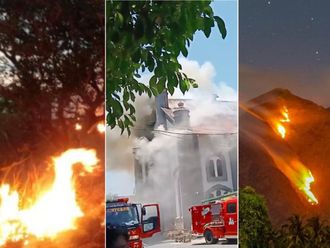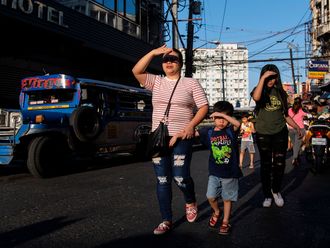Cagayan de Oro City: An independent think tank foresees a difficult year for Filipino workers, both at home and abroad.
Romeo, a 43-year-old in the village of Consolacion, has been jobless for four months now since his contract as a construction worker expired.
His wife and three children, the eldest a seven-year old girl and youngest a two-year-old boy, all rely on Romeo although his employment has been intermittent.
"I used to work at [a local soft drink bottling plant]. But when they started contracting out job placements and stopped regularizing workers, I was among the hundreds that got retrenched," Romeo said in the dialect.
"The year started difficult for me. I guess it is just logical it will end as hard. I hope the next one will be better though," Romeo said wistfully, staring at the plastic Christmas tree.
On the east side of the city — San Lazaro, Lapasan — Wilma, 35, is less optimistic than Romeo.
"This will worsen. After the election, we will surely get demolished. They [politicians] are not implementing it because they are still wooing our votes," Wilma said in Tagalog.
Romeo and Wilma are among the 25.2 million Filipinos who will have bleak prospects for the year ahead.
According to IBON Databank's Final Quarterly Labor Force Survey (LFS) figures for this year "will likely show that things have gotten even worse".
"Last year, there were 4.4 million unemployed where the true unemployment rate was at least 11.5 per cent," the LFS states.
Worst figure
In his December IBON Special Report, Sonny Africa, research head, said this was the worst jobless figures for Filipinos.
"These estimates try to correct for the government's change in definition of ‘unemployed' in April 2005, which reduces the number of unemployed by around 1.5 million and the unemployment rate by around 3.5 per cent," said Africa.
He added that average unemployment rate for the period of 2001-2008 is 11.3 per cent.
This is the worst eight-year period of sustained high joblessness since 1956, he said.
"Unemployment rates were much lower in 1956-1960 [8 per cent], 1961- 1970 [7.3 per cent], 1971-1980 [5.4 per cent], 1981-1990 [10.2 per cent] and 1991-2000 [9.8 per cent]," Africa points out.
Poverty
Here in Northern Mindanao, the National Statistical Coordination Board included it in their list among the island's regions having high poverty incidence with 36.1 per cent.
The Bureau of Labour and Employment Statistics of Department of Labour and Employment, in their latest figures said some 678,000 people are either unemployed or underemployed showing an unemployment rate of 7.1 per cent. This is a spike from 6.3 per cent unemployment rate in the region in the same month of last year.
"This trend is unchanged even if we consider two major changes in methodology. The change in labour force coverage in 1976 and the change in the reference period in 1976-1987," said Africa. In 1976, the national government raised the threshold age of labour force participation from ten to 15 years old.











